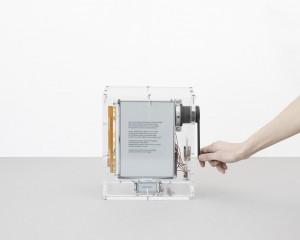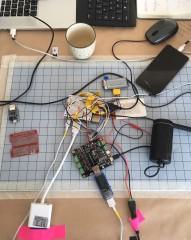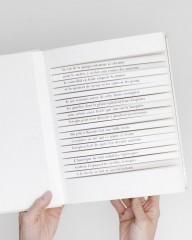Automatize
POETRY BOX
Date: 2018-2019
Materials: aluminum, vegetal felt, wood, recyclable plexiglas , screws and bolts, electronic components, e-paper screen
Tools: computer screen, screw-gun, screwdriver, wood saw, cutter, ruler, bulldog clip, pliers, soldering iron, multimetre
Energie: electrical, human
Size: 28,5 x 31 x 12 cm
Collaboration: Laboratoire Lattice (ENS) et Marion Ficher
Website: https://www.oupoco.org
The Poetry box was made in collaboration with Lattice laboratory at Ecole Normale Supérieure in Paris and the computer specialist Marion Ficher. In 2018, within the framework of the OUPOCO project, the Lattice has developed a program of poetry automatic generation inspired by the book One hundred million million poems written in 1961 by Raymond Queneau. We took part to this project to think of an artwork that could bring to this research a new form of visibility and materiality.
To do this, we created a simple machine that allows a user to automatically generate a poem by turning a handle. Through the intermediary of a little peripheral screen, the user is also informed of energetical quantity that was needed to generate this new poem. If he likes, he can try to guess the functioning of the Poetry Box by looking through the transparent sides.
This both mechanical and electronical device directly refers to Hans Haacke’s Condensation Cube which can be considered as a milestone of american conceptual art, and which is almost contemporary to Raymond Queneau’s book since it was made in 1965. We believe we can see a great similitude between these two artworks insofar as each of them react so to say to the conditions of their exhibition: the Condensation Cube produces water steam depending on the humidity of the place it is exhibited in, and Queneau’s book produces poems depending on the chance and the mood of the reader.
This project was for us the opportunity to confront ourselves to the conceptualization and the making of an object that could be both a machine and an artwork and to reflect on ecological issues implied by this practice. What falls under a machine in works of art and in return what falls under sculpture in the machines that surrounds us? How can we make more visible the environmental impact generated by the construction of a machine or a work of art?









